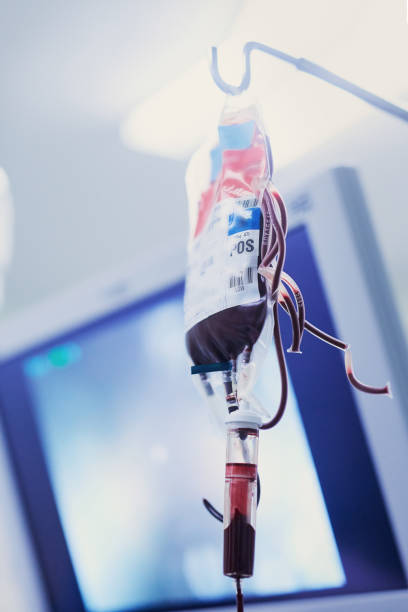Can Gay Men Donate Blood? Understanding the Policies and Implications
Introduction
The topic of blood donation by gay men has long been a contentious issue, steeped in historical prejudice, public health concerns, and evolving scientific understanding. Blood donation policies regarding gay men vary widely across the globe, reflecting differing levels of acceptance, stigma, and the balance between ensuring a safe blood supply and promoting inclusivity.
Historical Context
The history of blood donation restrictions for gay men dates back to the early days of the HIV/AIDS epidemic in the 1980s. At that time, little was known about the virus, and there was a significant concern about contaminated blood supplies. As a result, many countries implemented blanket bans on blood donations from men who have sex with men (MSM) to protect the blood supply. This was a reactionary measure to a public health crisis and was based more on fear and a lack of understanding than on solid scientific evidence.
Evolution of Blood Donation Policies
Over the years, as our understanding of HIV/AIDS improved and testing methods became more sophisticated, many countries began to reconsider these bans. The introduction of highly sensitive nucleic acid testing (NAT) has significantly reduced the window period during which HIV can go undetected in donated blood. As a result, many health authorities have begun to update their policies to reflect these advancements.
In some countries, the outright bans have been replaced with deferral periods. Initially, these deferral periods were often quite lengthy, sometimes up to a year. However, as testing technology continued to improve, these deferral periods have been shortened in many places. For example, in the United Kingdom, the deferral period has been reduced to three months.
Current Global Policies
Today, blood donation policies for gay men vary widely from country to country. In the United States, the Food and Drug Administration (FDA) implemented a three-month deferral period in response to the COVID-19 pandemic, reducing it from twelve months. This change reflects an acknowledgment of the advancements in testing and a desire to increase the blood supply during a critical time.
In Canada, as of September 2022, gay men can donate blood if they have been abstinent for three months. This is a significant shift from the lifetime ban that was in place until 2013 and the five-year deferral period that followed.
In contrast, countries like Italy and Spain have adopted a risk-based approach rather than a deferral period. In these countries, potential donors are assessed based on their individual risk behaviors rather than their sexual orientation. This approach aims to ensure that the blood supply is safe without discriminating against an entire group of people based on outdated notions of risk.
The Scientific Perspective
From a scientific standpoint, the risk of HIV transmission through blood donation has been dramatically reduced thanks to advanced screening technologies. Modern testing methods, such as nucleic acid testing, can detect HIV within a few days of infection. This means that the risk of HIV-positive blood entering the supply is extremely low.
Furthermore, the focus on MSM as a high-risk group is increasingly seen as outdated. HIV transmission is more accurately linked to specific behaviors rather than sexual orientation. For instance, unprotected sex with multiple partners increases the risk of HIV transmission, regardless of whether those partners are same-sex or opposite-sex.
Ethical Considerations
The debate over blood donation by gay men is not just a scientific or medical issue; it is also an ethical one. Many advocates argue that blanket bans or lengthy deferral periods are discriminatory and perpetuate stigma against gay men. These policies suggest that all gay men are inherently high-risk, which is not only inaccurate but also harmful.
Ethical blood donation policies should aim to balance the safety of the blood supply with the need to avoid discrimination. This means moving towards a more individualized assessment of risk rather than relying on broad categories that exclude entire groups of people.
Public Health and Inclusivity
Promoting inclusivity in blood donation policies has broader public health benefits. During times of crisis, such as the COVID-19 pandemic, the need for blood donations can become critical. Excluding a significant portion of the population from donating blood can exacerbate shortages.
Moreover, inclusive policies can help to reduce stigma and encourage more people to participate in blood donation. This not only helps to ensure a more robust blood supply but also promotes a sense of community and shared responsibility.
Case Studies: Success and Challenges
Several countries have successfully implemented more inclusive blood donation policies. Italy and Spain, for example, have shown that a risk-based approach can be effective in maintaining a safe blood supply without discriminating against gay men. These countries assess potential donors based on their sexual behaviors and other risk factors, rather than their sexual orientation.
However, implementing such policies is not without challenges. It requires thorough training for healthcare professionals to ensure that they can accurately assess individual risk. It also requires public education to ensure that potential donors understand the new criteria and feel confident in the safety of the blood supply.
Advocacy and Future Directions
Advocacy groups have played a significant role in pushing for more inclusive blood donation policies. Organizations such as the American Red Cross, GLAAD, and the National LGBTQ Task Force have been vocal in calling for changes to discriminatory policies. These groups argue that modern testing methods and a better understanding of HIV transmission mean that current deferral periods are unnecessarily restrictive.
Looking to the future, the trend is towards even more inclusive policies. Some advocates are calling for the complete elimination of deferral periods for gay men, arguing that individual risk assessment is the only fair and effective approach. This would involve a detailed questionnaire for all potential donors, focusing on behaviors that increase the risk of HIV transmission rather than on sexual orientation.
Conclusion
The question of whether gay men can donate blood is a complex one, involving a mix of historical prejudice, public health concerns, and evolving scientific understanding. While significant progress has been made in recent years, with many countries adopting shorter deferral periods or risk-based approaches, there is still work to be done.
Moving towards more inclusive blood donation policies is not only a matter of fairness and equality; it is also essential for ensuring a robust and safe blood supply. By focusing on individual risk behaviors rather than broad categories, we can protect the blood supply while also promoting inclusivity and reducing stigma.
The future of blood donation policy should be guided by the principles of science, ethics, and public health. As our understanding of HIV and other blood-borne diseases continues to improve, there is hope that policies will continue to evolve in a way that respects both the need for safety and the rights of all potential donors.




